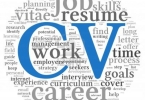6 phút từ vựng: Is there a good and a bad smile?
bạn có biết biểu tượng mặt cười - cái mà chùng ta thường nhìn thấy trong Email xuất hiện lần đầu tiên vào năm nào không?
Cùng tìm hiểu với 6 minutes English hôm nay với chủ đề Is there a good and a bad smile?

When did the smiley face, which we often see in e-mails, first appear?
a. in the early 1960s
b. in the early 1970s
c. in the late 1970s
Nghe bài hội thoại ở đây
Transcript
Yvonne: Welcome to 6 Minute English! I’m Yvonne Archer and joining me today is Kate. Hello, Kate!
Kate: Hello, Yvonne!
Yvonne: Now Kate, you’ve got a shy but pretty smile, I'd say. Are you happy with it?
Kate: Oh, thank you very much. Yes, I am happy with it. But Yvonne, you've got a fantastic, big smile.
Yvonne: Oh thanks, but according to recent research, simply having a pretty or a big smile isn't good enough any more. But before we find out more, here's today's question: Kate, we’ve all become really used to the smiley face, for example, in e-mails. But when did the very first smiley face appear?
a: In the early 1960s
b: in the early 1970s or
c: in the late 1970s
Kate: Well, I think the smiley face is a sort of iconic image and I can imagine it being around in the hippy era. So, I'm going to say a) – the 1960s.
Yvonne: As usual, we'll find out whether you're right later on. Now, here are three sayings about how powerful a smile can be from the BBC's Jonny Hogg. Which is your favourite?
Jonny Hogg
Peace begins with a smile…A smile is the universal welcome…Life is short, but a smile only takes a second.
Yvonne: Kate, what did you think of the saying: "peace begins with a smile"?
Kate: I really like that saying and I think it's true. I think if everybody smiled more, there'd be less war and aggravation and fighting.
Yvonne: So what about: "a smile is the universal welcome"
Kate: I like that one too. I think it's a universal sign – it's a signal. Everybody understands a smile, no matter what language you speak.
Yvonne: And what about "life is short, but a smile only takes a second"? I think that's my favourite.
Kate: Yes, I like that one too. I think it's very important to smile because it's free and it's easy to do and it makes everyone feel better.
Yvonne: But which was your favourite? You liked them all, Kate!
Kate: I think I agree with you; I like the last one – life is short, but a smile only takes a second.
Yvonne: Yes, you can never be too busy to smile at someone really.
Kate: Exactly!
Yvonne: But it’s really important to give the right type of smile - as the Go Group recently found out. The company is based in Scotland and helps other businesses. Now here’s the BBC’s Jonny Hogg with a description of three different types of smile that the company says they are not good. So, this can be useful information for job interviews. But why are the following, bad smiles?
Jonny Hogg The first is 'The Enthusiast' - very wide, all teeth showing, possible evidence that you can have too much of a good thing. Then there is the 'Big Freeze' - a fixed grin that looks practised and fake. Finally comes 'The Robot', a small thin smile lacking in warmth.
Yvonne: Oh dear, I think my smile is ‘the enthusiast’ – it’s very wide with lots of teeth showing. So why is it possible that my smile isn’t good, Kate?
Kate: Well, he said that someone who’s an enthusiast is extremely eager, really interested and perhaps even excited about what they do – or on a job interview, about the job they want.
Yvonne: Yes, that’s me – I love what I do!
Kate: Yes, but the research shows that your smile might be ‘possible evidence’ – that it might be proof, that you're a little too enthusiastic for some people - and that’s not always good apparently.
Yvonne: It can be annoying, I suppose. Now, what about ‘the big freeze’ and ‘the robot’ smiles? They both seem cold and unwelcoming, don’t you think?
Kate: Well yes – both ‘the big freeze’ and the ‘the robot’ are cold – they’re ‘lacking in warmth’ he said, and so they don’t welcome people. And as we heard, ‘the big freeze’ doesn’t look real or natural - so it looks ‘fake’ and looks like the person has worked on it carefully – like they’ve ‘practised’ it.
Yvonne: And everyone probably gets the same smile, every time, in every situation. So ‘the big freeze’ is a fixed smile. Now ‘the robot’ is obviously mechanical – without any real feelings.
Kate: Yes, robots can’t think, can they? So that smile is given automatically – and it’s the opposite to your smile, Yvonne. It’s thin and small.
Yvonne: Well, I’ve been given ‘the big freeze’ and ‘the robot’ smile in shops from unenthusiastic people who don’t really like their jobs.
Kate: Yes, so have I. And I always get it from air hostesses on airplanes because they have to smile all day at so many people. I don't blame them at all.
Yvonne: That's true – they definitely have a fixed smile. OK, those were three examples of bad smiles. But what makes a really good one? Here's more from the BBC's Jonny Hogg:
Jonny Hogg
The group also warns about smiling too quickly, saying it can make you look insincere. The best smile, they say, is slower and floods naturally across the whole face.
Yvonne: So Kate, how can we give the best type of smile?
Kate: Well, according to the research, the best type of smile comes slowly rather than quickly so that it looks sincere – genuine or real. And the best smile floods naturally across the face. So don’t force yourself to smile and don’t just smile with your mouth.
Yvonne: No! So a smile should cover the entire face. Well, there’s certainly a lot to think about – and I think it would be really difficult for me to change my natural smile.
Kate: And I don't think you should either. You've got such a nice smile.
Yvonne: Oh, thank you. Anyway, it’s time for the answer to today’s question. Kate, when did you say the very first smiley face appeared?
Kate: I said the early 1960s.
Yvonne: And you were absolutely right!
Kate: Oh good!
Yvonne: It was 1963. Well that's all for today’s 6 Minute English; we hope we made you smile.
Tổng hợp từ vựng mới trong bài
- shy
not always very comfortable around other people
- an iconic image
a symbol or picture that is representative of a certain time or era in history
- the hippy era
a time during the 1960s when people focussed on peace rather than war, beautiful things and being happy
- aggravation
irritations, troubles, worries
- a universal signal
a sign or symbol that is immediately understood by everyone around the world
- evidence
proof or information that shows something is true
- fake
artificial, not real or genuine











Bình luận